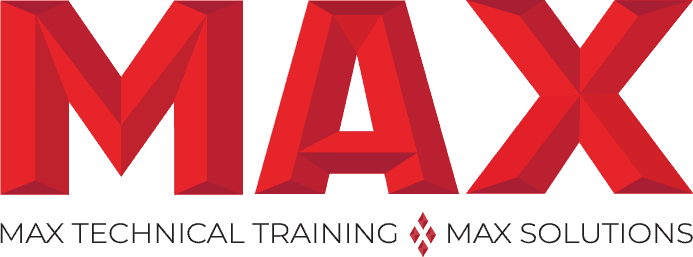
Maxtrain.com - info@maxtrain.com - 513-322-8888 - 866-595-6863
Planning and Managing Agile Projects
Alert MeDescription
Planning and Managing Agile Projects Introduction
Welcome to the Planning And Managing Agile Projects course. This comprehensive 3-day program is designed for everyone from newcomers to seasoned professionals in project management. It extends beyond basic Scrum Master training to cover in-depth aspects of Agile planning and management.
Agile methodologies are increasingly vital in project management, aligning with the PMI Agile Certified Practitioner (PMI-ACP) certification standards. This course equips professionals with strategies to transition projects effectively into Agile environments and adopt Agile principles seamlessly.
This course offers a hands-on approach, including a case study to demonstrate Agile planning and management in action. Participants will learn how to facilitate self-directed teams and deliver continuous value in an Agile framework.
Course Objectives
- Agile Planning and Management: Efficiently plan, manage, and close projects using Agile practices.
- Risk Mitigation: Utilize Agile principles to mitigate project uncertainty and risk.
- Delivery of Key Functionality: Ensure essential functionality delivery in projects.
- Fostering Agile Teams: Cultivate a self-managing team environment in line with evolving business needs.
- Agile Evaluation Techniques: Apply Agile methods to accurately measure and evaluate project status.
Prerequisites
- Basic understanding of project management; PMI ACP certification aspirants should meet specific experience requirements.
Audience
- Ideal for managers, executives, project managers, business analysts, IT stakeholders, quality and process engineers, technicians, and team leaders
Planning and Managing Agile Projects Outline:
Introduction – Fundamentals of Agility
- Overview of Agile principles and values
- Waterfall vs. Lean vs. Agile simulation exercise
- Understanding the Agile Manifesto and its values
- High-level Agile Scrum framework
- Introduction to Scrum roles
- Introducing Agile Scrum to organizations
- Challenges in building end-to-end systems
- Conclusion
Value-Driven Delivery – Identify Case Study and Agile Team
- Value-Driven Development
- Characteristics of Agile Scrum
- Application Lifecycle Management
- Selecting a case study for analysis
- Assembling the Agile team
- Identifying and defining the Product Owner’s role
- Building the Scrum team
- Contrasting Agile with Waterfall
- Conclusion
Stakeholder Engagement – Envision the Product
- Review of Agile checklist
- Engaging with stakeholders
- Understanding stakeholder needs and expectations
- Business Motivation Model
- Envisioning the product vision
- Articulating business and technical functionality
- Agile realization
- Post-session activities: Conduct a review and retrospective
- Conclusion
The Agile Product Development Life Cycle – Release Planning
- Adapting to a change-driven project plan
- Initiating an Agile project
- Planning within the Agile product development life cycle
- Establishing the initial release plan
- Prioritizing releases and product-level planning
- Grouping initial product backlog items
- Creating a release plan
- Conclusion
Coarse-Grain and Time-Boxed Iterations
- Embracing the high-level vision and release plan
- Developing the product backlog
- Guidelines for the product backlog
- Establishing decision and acceptance criteria for user stories
- Estimating complexity using story points
- Coarse-grain estimates and planning poker
- Agile Scrum’s time-boxed nature
- Project time-boxed considerations
- Establishing core hours and team velocity
- Creating a project time-box
- Conclusion
Plan the Iteration (Part 1)
- Sprint planning
- Sequential vs. iterative development
- Iteration planning in the context of Agile Unified Process
- Iteration planning in the context of business analysis
- Sprint ‘Zero’ activities
- Spikes, master test, and backlog accuracy
- First half of the sprint planning meeting
- Defining sprint goals and scope
- Identifying product backlog items for the sprint
- Prioritizing user stories
- Sizing stories and understanding sprint capacity
- Confirming and refining high-priority product backlog items
- Conclusion
Plan the Iteration (Part II)
- The second half of the sprint planning meeting
- Detail sprint planning
- Story size and task size
- Estimating relative effort in fine-grain
- Planning poker with ideal days
- Creating a sprint backlog
- Identifying and estimating sprint backlog tasks
- Committing to the sprint backlog
- Alternate approaches to committing
- Finalizing the sprint plan
- Conclusion
Tools and Techniques for Managing Scrums
- Managing the Scrum
- Leveraging information radiators
- Managing the sprint backlog
- Effective project status communication
- Daily Scrum meetings
- Scrum task board
- Examples of task board applications
- Burndown charts
- Creating sprint burndown charts
- Conclusion
Running the Sprint – Discovering and Satisfying Requirements
- Paradigm shift in requirements
- Selecting ‘next priority’ tasks
- Elaborating requirement details
- Facilitating team activities
- Validating Agile requirements
- Handling Agile non-functional requirements
- Creating test scenarios and cases from user stories
- Gaining customer acceptance
- Managing Scrums with daily stand-up
- Techniques for managing change during the sprint
- Conclusion
Sprint Review and Retrospective
- Traditional acceptance and sign-off vs. Agile review
- Sprint review: Working product as a measure of progress
- Preparing for the sprint review
- Verification vs. validation
- Organizational readiness
- Definition of Done (DoD)
- Updating the product backlog
- Input for the next sprint
- Sprint retrospective and continuous improvement
- Measuring Program Development Life Cycle (PDLC) maturity
- Sprint retrospective guidelines
- Conclusion
Issues with Introducing Agile, Scaling Projects, and Boosting Performance
- Roots of Waterfall Culture
- Agile’s value proposition
- Organizational Readiness for Agile
- Scaling Agile with larger teams
- Recognizing the challenges of Agile Scrum
- Stakeholder engagement as the starting point
- Agile Certified Professional (PMI-ACP)
- Transitioning issues
- Conducting a review and retrospective
- Conclusion
Wrap-Up and Additional Information
- Summary of course learning objectives
- Agile product life cycle (Scrum)
- Daily agendas
- Useful books on Agile
- Case study: Proposed project competition for a universal Apple application
- Project background, goals, and objectives
- Roles and responsibilities
|
$1795.00
|
3 Days Course |




